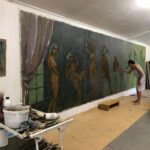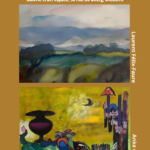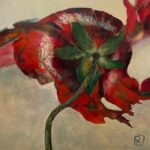ENA LINDENBAUR : “Within Closed Eyes Once Again Close Your Eyes And Even Stones Will Come To Life” ~Peter Handke
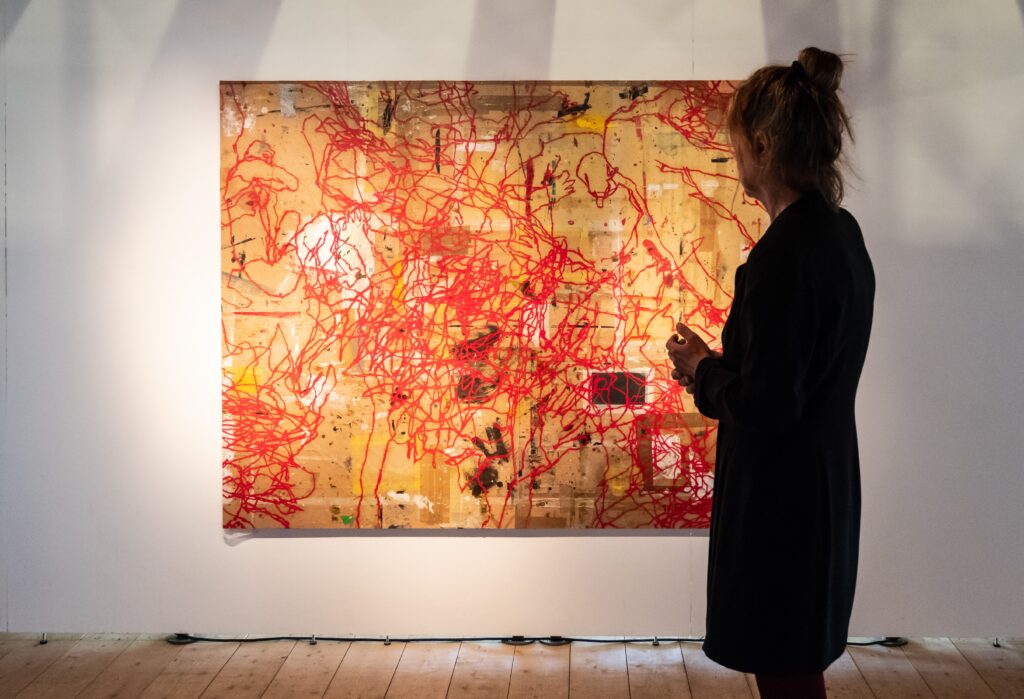
No one will deny that these are difficult times. One of the collateral damages of the Covid virus is that a lockdown prevents us from moving around and meeting others. This was a problem when preparing the present blog post. As much as I wanted to, I was unable to visit this month’s artist. So here again, for the second time this year (it had been the case for Anna Puig Rosado for the same reasons) all communications had to be done by mail, telephone and internet.
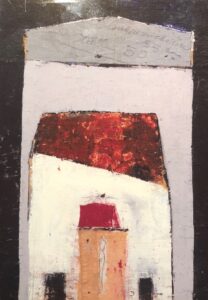
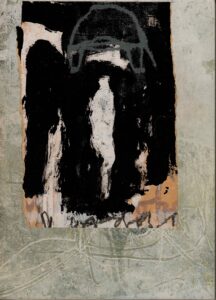
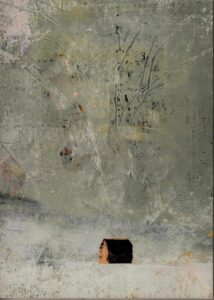
I had seen and admired the paintings by Ena Lindenbaur a few years ago at an exhibition. I remember being struck by the quality and originality of her work and thinking I would like to meet the artist. Art can have strange effects, as though having drawn the curtains you see something unexpected that arrests your attention. It can come as a shock, something you recognise yet don’t know why and what it is. I am not sure who said it – perhaps I did – but you don’t discover art, it is art that comes to you. That was the feeling I got when I saw Ena Lindenbaur’s work for the first time. She is a German artist who lives and works between two places, Stuttgart in Germany and Nyons in the Drôme drawing inspiration from two contrasting cultures. Her choice of the Drôme was all the more reason for wanting to interview her, as she perfectly fits in with my “Provence Reflections, art ramblings” in search of artists living here.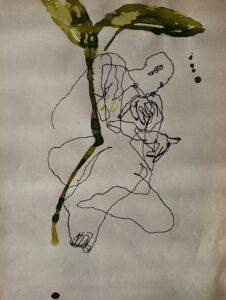
After I had contacted Ena by phone, she sent me a handsome catalogue with an excellent selection of her drawings and a very informative and helpful interview that shed light on her artistic path which is, to say the least, quite atypical. In my opinion the path she has chosen to tread is exemplary for it provides a better understanding of the significance and the benefits of art, in the truest sense of the word.
As a child before even knowing how to write, Ena loved tracing lines. “They were my first language” she says. From early childhood therefore, lines must have held a very particular significance that has stayed with her in various forms up until the present day. They were also a rather unique means of communication for she recalls how as a little girl she used to make drawings to inform her mother when she came back home from her work about the events of the day.
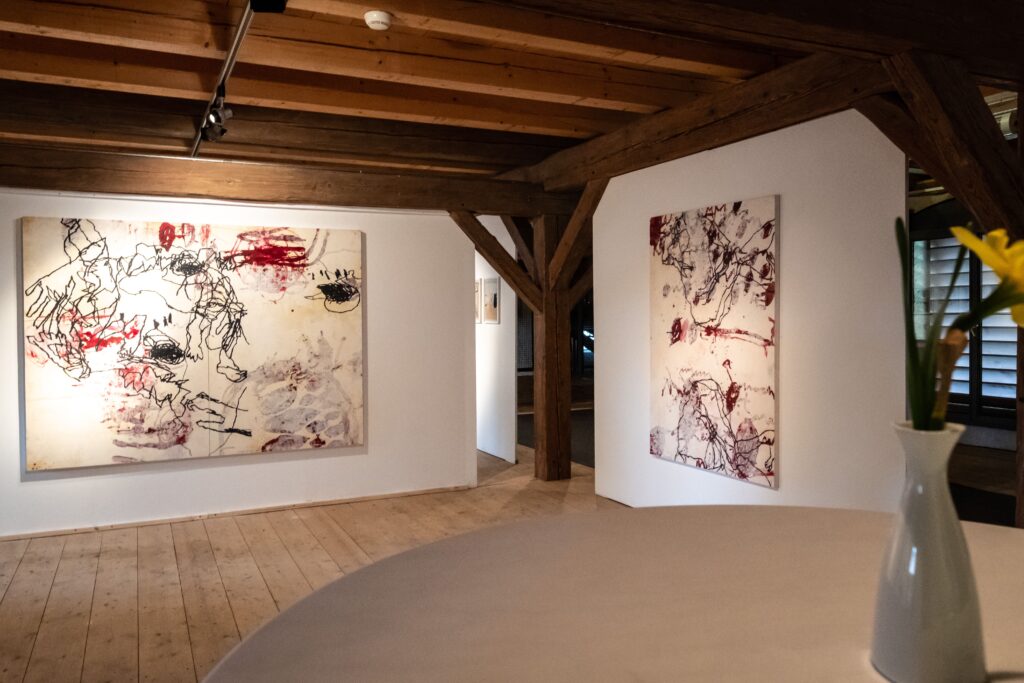
It was logical therefore that after secondary school Ena should chose to go to art school, interestingly enough opting for courses in calligraphy which is also based on tracing lines but this time in a highly formalised manner. After having obtained her diploma Ena’s art practice evolved through various transitional phases. During a time, she earned a living as a medical and botanical draughtsperson. Although she enjoyed the discipline and concentration required to reproduce the objects precisely and in detail, from the very beginning her heart was set on finding a form in art with which she could spread her wings and express herself fully. This implied getting rid of the strictures of academic training that require that you “draw correctly in order to please which is so contrary to all creative work.”
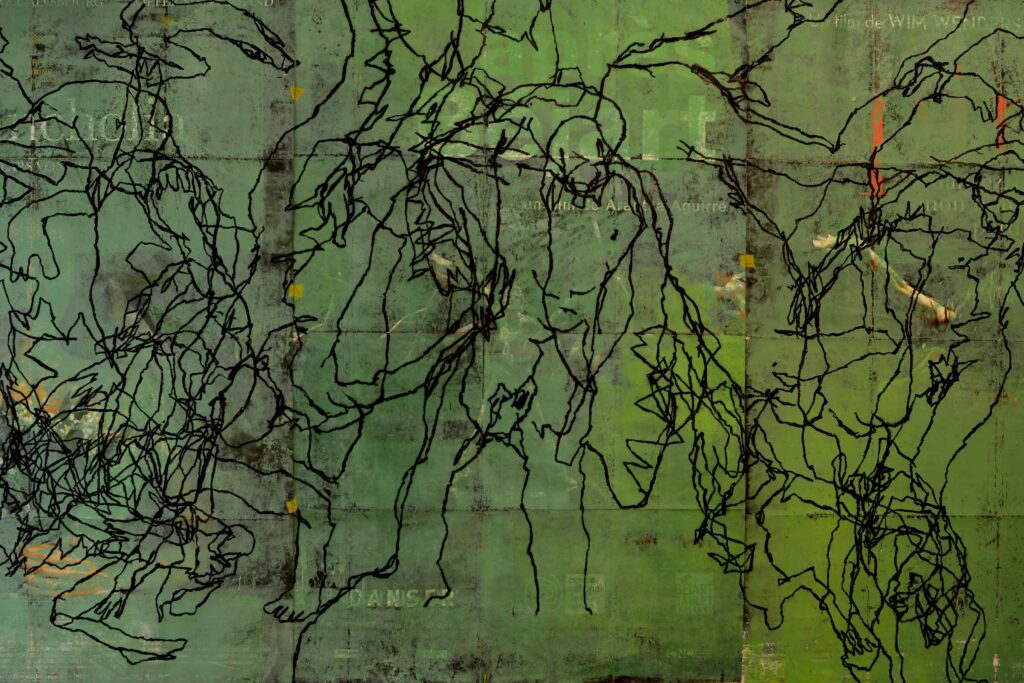
A turning point in Ena’s pursuit of authenticity was to come in the 90s when she decided to distance herself from the norms and customs of German culture with which she had grown up in order to confront new cultural codes and ways of life. For creative souls like hers to challenge the unfamiliarity of another society often has a liberating effect and widens the array of their artistic means. There are many examples of writers, painters and musicians who live abroad for that very reason. As for Ena she chose to move to France, and while maintaining her Stuttgart studio she settled in Nyons in the Drôme, henceforth dividing her activities between both places.
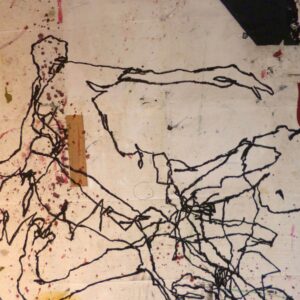 This was not the first time that Ena ventured into unknown territory. One day having shown some of her drawings she was quite pleased with to her teacher -an artist she much respected- he reacted sharply by saying: “I’m absolutely not interested in knowing that you can draw”, and he advised her forthwith to close her eyes when she worked. She did. In a nutshell, this piece of advice defines the whole meaning of art today: rejecting the idea that an image should “look like” the visible world. Instead of fooling the eye, art must speak to the soul. “It was an extraordinary and sudden experience because I felt that in this way I was not trying to please or to draw in what was supposed to be the right manner. I felt much freer, much more in line with who I really am because I was acting in the present: no longer in repetitions of the past nor in the outcomes of the future.”
This was not the first time that Ena ventured into unknown territory. One day having shown some of her drawings she was quite pleased with to her teacher -an artist she much respected- he reacted sharply by saying: “I’m absolutely not interested in knowing that you can draw”, and he advised her forthwith to close her eyes when she worked. She did. In a nutshell, this piece of advice defines the whole meaning of art today: rejecting the idea that an image should “look like” the visible world. Instead of fooling the eye, art must speak to the soul. “It was an extraordinary and sudden experience because I felt that in this way I was not trying to please or to draw in what was supposed to be the right manner. I felt much freer, much more in line with who I really am because I was acting in the present: no longer in repetitions of the past nor in the outcomes of the future.”
Coming as close as possible to what really matters, and drives her to make art, runs like a red thread through Ena’s whole life as an artist. She has experimented in many ways. Writing letters with a paint brush and then enlarging them on a wall, playing with colour by using photography and screen-printing techniques, making drawings with light, illustrating poetry by both French and German poets and letting her imagination figure out their different mind-sets. She has let her hand draw lines while a dancer improvised a choreography in her studio and she has forced herself to draw harsh and naked truths like those of the damaged organs and deformed bodies she saw in hospitals where she worked as a medical draughtsperson, or when trying to apprehend the death of her mother.
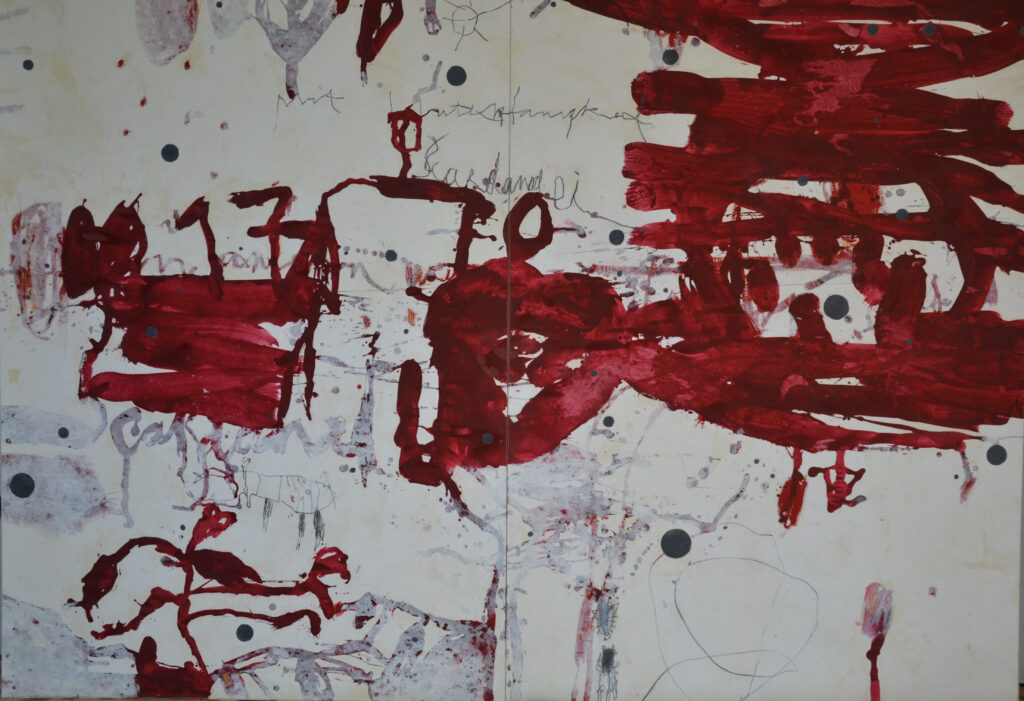
Gradually a shift has taken place in Ena’s art whereby she accords increasing importance to drawing lines, in a sense going back to her childhood days where it all began, but on a scale, she never could have dreamed of. “Paintings have been very important for me” she says “and they were much in demand. In the course of twenty years, I have held many successful exhibitions of my paintings before progressively adding drawings to them, layering one on top of the other so that in the end, it looked as though the drawing had become the final message. What interests me most today is drawing directly on large sheets of paper or in a three-dimensional space. I no longer wish to conform to the standard format of a painting for it forces my hand to comply with it and hems me in.”
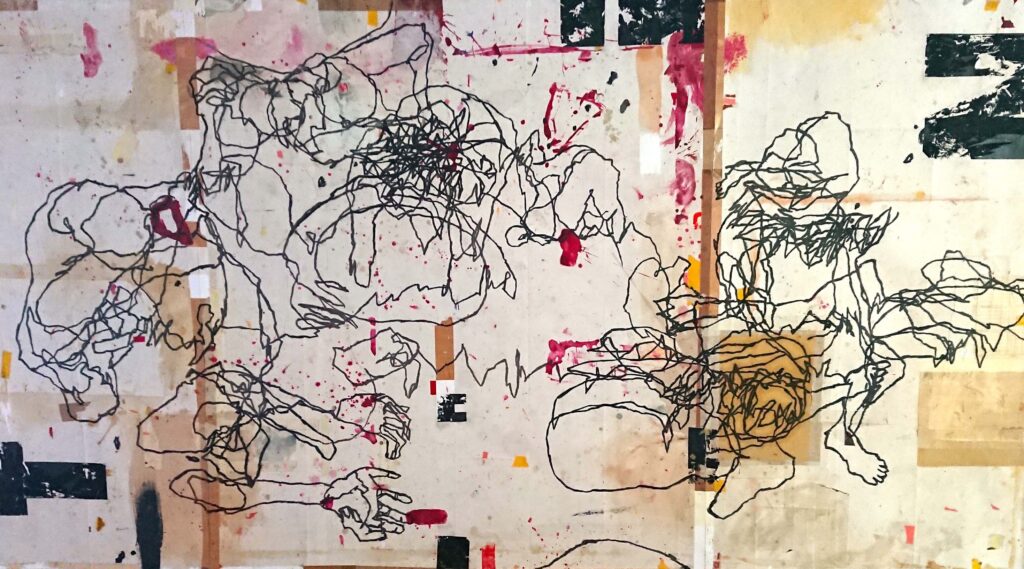 Ena’s drawings are quite impressive and they often border on writing, a bit like signatures gone wild. They form tangles and knots that tie and untie and in which you can perceive human forms, drawn with spasmodic strokes like those of an Egon Schiele, interlocking and splitting up again. Other forms may recall those of Dubuffet’s art brut, but there is nothing art brut about them. Each and every line is at its place and has been set down in accordance with the inner logic of a creative spirit. The stories out of Ena’s imagination make an impact because the onlooker feels and knows that they are true. There lies the mystery of art!
Ena’s drawings are quite impressive and they often border on writing, a bit like signatures gone wild. They form tangles and knots that tie and untie and in which you can perceive human forms, drawn with spasmodic strokes like those of an Egon Schiele, interlocking and splitting up again. Other forms may recall those of Dubuffet’s art brut, but there is nothing art brut about them. Each and every line is at its place and has been set down in accordance with the inner logic of a creative spirit. The stories out of Ena’s imagination make an impact because the onlooker feels and knows that they are true. There lies the mystery of art!
Catalogue Ena Lindenbaur
Price 24€ (can be bought directly at the LIBRAIRIE DE L’OLIVIER at Nyons or ordered -with costs of postage- librairie.olivier@club-internet.fr
Exhibitions 2021
ELLES
MAC’A – Maison des Arts Contemporains
Cloître Saint Louis – Avignon
From 6 au 28 March
Chapelle du Collège – Carpentras
From 5 to 26 March
www.mac-a.org
30 ANS GALERIE ESPACE LIBERTE
5 Rue des Alpes 26400 Crest
From 20 March to 18 April
www.galerieespaceliberte.fr
& – ESPERLUETTE
Galerie Pigment Monté du Théâtre 04700 Lurs
From 27 August to 10 October
www.galerie-pigments.fr
Exhibitions 2022
Ena Lindenbaur
L’Espace d’Art François-August Ducros
26230 Grignan
July/August
www.espace-ducros.blogspot.fr
Posted in: Art
